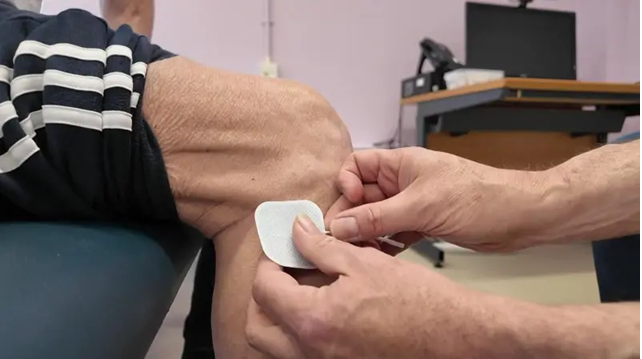There is a keen interest in the Parkinson’s community about the potential effectiveness of ‘red light therapy’ or ‘laser light therapy’ for the treatment of Parkinson’s symptoms. It is one of the most frequently asked questions by our InfoLine callers.
This type of potential treatment is more accurately known as photobiomodulation or PBM.
Parkinson’s NSW endorses evidence-based research and therapies which have been rigorously evaluated using scientific methodologies. To date, no large-scale studies or peer reviewed scientific research have established the safety and effectiveness of PBM for treating the symptoms of Parkinson’s.
There are, however, some promising smaller scale studies going on – which will eventually ramp up to full scale studies if initial results justify it.
Australian medical technology company SYMBYX has completed its first human trial of the use of laser light therapy (photobiomodulation or PBM) to reduce the symptoms of Parkinson’s by targeting the gut-brain axis.
The proof-of-concept trial showed that measures of mobility, cognition, dynamic balance, sleep, motivation, and fine motor skills of participants were all significantly improved.
Since then, these results have been confirmed in a follow-up trial in Sydney – soon to be published in the Journal of Photomodulation, Photomedicine and Laser Surgery.
Combined, these results reinforced that larger, randomized placebo-controlled trials are warranted to further consolidate the data.
Two such trials using SYMBYX lasers are underway in Sydney and Canada, with results expected in the first half of 2022.
SYMBYX uses proprietary, super-pulsing laser technology that delivers optimal doses of light therapy without generating heat. The lasers are non-invasive, painless to use and portable. They are medical grade lasers, containing diodes manufactured in Sweden under exclusive license to SYMBYX, and are CE marked and ARTG listed.
“Photobiomodulation therapy can energise cell mitochondria and help with the loss of cellular energy that is common in Parkinson’s,” said SYMBYX CEO Dr. Wayne Markman.
“Most people don’t realise that their colon has the capacity to produce both dopamine and serotonin, the critical neurotransmitters required for healthy brain function.
“Photobiomodulation to the gut reduces inflammation and promotes the metabolism of short-chain fatty acids – in turn influencing the production of more dopamine and serotonin. This process delivers therapeutic benefits to people with Parkinson’s, who are impacted by the loss of dopamine,” he said.
The proof-of-concept trial in Adelaide involved 12 participants who had been diagnosed with Parkinson’s by a neurologist. Six were randomly chosen to begin 12 weeks of transcranial, neck and abdominal photobiomodulation in a clinical setting before continuing with the treatment for a further 40 weeks at home.
The remaining six were waitlisted for 14 weeks before commencing the same treatment.
The cranial, neck and abdominal regions were targeted for treatment based on the importance of the gut-brain axis in Parkinson’s, the richness of the enteric nervous system that governs the function of the gastrointestinal tract, the proximity of the vagus nerve in the neck – and previous success via these target areas in animals.
Participants were assessed for mobility, fine motor skills, balance and cognition before treatment began, at the four-week mark, after 12 weeks and then at the end of the home treatment period.
All showed improvement in the clinical signs of Parkinson’s – including functional mobility, fine motor skills and cognition. These improvements were maintained for as long as treatment continued, for up to one year in a neurodegenerative disease where decline is typically expected.
None of the participants experienced significant decline in any outcome measure over the year.
It is believed this was the first clinical trial of using photobiomodulation to target the gut-brain axis. However, several small trials and case studies are underway exploring transcranial photo biomodulation for Parkinson’s.
Sources
SYMBYX
Improvements in clinical signs of Parkinson’s disease using photobiomodulation: a prospective proof-of-concept study
Gut health to affect changes in Parkinson’s disease
Other scientific articles on photobiomodulation (PBM) for Parkinson’s
https://www.ncbi.nlm.nih.gov/pmc/articles/PMC6128061/
https://www.frontiersin.org/articles/10.3389/fnagi.2020.00089/full









